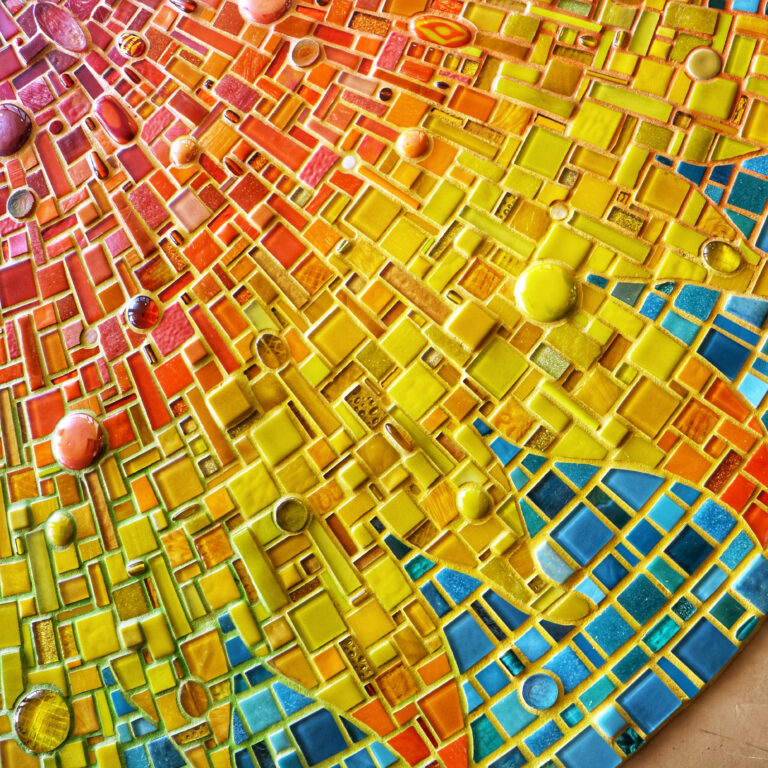I always love it when parents share with me that they have a piece of art their child made in my class hanging up in their house. It tells me they value their child’s creation and what I do as an art educator. It can boost the child’s confidence and self-esteem as well. Unfortunately, only some of the artwork students produce is valued by them or even makes it home for the parents to see. I still remember the end of my first year, finding students’ works in the garbage can and the demoralizing feeling that went with that discovery.
After that, I made it a rule that they couldn’t throw out the artwork. As I moved into teaching some upper-level art classes, it was less of a problem I had to contend with, but it was still a battle with any intro class. As this school year ends, I wonder how other art teachers handle getting the work home, so I asked. It turns out there are a lot of different thoughts from art teachers and some clever strategies they shared.
Keeping It Out Of The Trash Can
First, I found I am not alone. Many other teachers work hard to keep work out of the trash can. One teacher even hides her garbage cans on the day students are to take work home. Art teacher Sarah Brown developed a similar strategy to my own. “They’re not allowed to trash it in my room or the entire school. I tell them the janitors will return it to me if they find it.” Art teacher Lana Kaylor provides an incentive and a disincentive. Students receive extra points if they send her a photo of the parent or guardian holding the project. She deducts points if she finds it in the trash anywhere. Several other teachers also shared similar strategies, asking students to document the work from home, sometimes for a grade. One teacher goes one step further and asks students to interview their parents about their favorite pieces.
Communicate With Parents
Many teachers, particularly those who teach elementary and middle school students, let parents know when the artwork is being sent home so they can anticipate the work and ask their child to see it. Be sure to share with students that parents know and will be expecting to see the art.
Best Practices for Getting the Work Home
I am a big fan of portfolios. If your budget allows, buy or make some form of a portfolio. Portfolios keep the work together both in the classroom and beyond. Instead of work being doomed to destruction in a messy teen’s bedroom, it can be stored, protected, and collected. I used to buy a portfolio like this for my intro students and one like this for my older students. You can often get good deals through art catalogs when buying in bulk. For just three dollars each, you can buy these transparent portfolios. Or buy a large railroad board, fold it in half, and tape up the sides.
Art teacher Hannah Liverant Close has another good strategy she uses with her high school students: “I hand everything back on exam day. They are much more likely to take it home if they don’t have to drag it from class to class before going home. And nothing can be thrown out in my room.” Another teacher gives her upper high school students time to bring their portfolios to their cars during class.
Art teacher KM Siemers sets his students up for success. He sends sculptures home two weeks earlier so students don’t have too much to bring home at once. He also demonstrates how to carry their work through the hall and how to curve it to fit into their backpacks. Even with high school-age students, I discovered I had to teach them not to fold a piece of artwork!
A Different Philosophy
Art teacher Linda Arnold has a different philosophy and doesn’t require work to be taken home. “Sometimes art doesn’t turn out the way they want it to, sometimes it is about the process, and sometimes they don’t have home storage options, and that is all ok!” She also finds she has a better success rate of work making it home if the student can take it after the project is completed “while they are still feeling emotionally connected to it,” she writes. Other teachers echo that they, too, feel students are more likely to bring work home immediately after finishing the project rather than letting it languish at the bottom of a portfolio while students forget about it. Others use work that is left behind as exemplars for future years. Other teachers find ways to recycle projects.
Other art teachers echo this with their approaches. Not all work is “forever,” and not all parents understand and value art. Another teacher observed, “They are living in a disposable society. Things are not treasured, everything is tossed in the trash.”
Go Digital
Another strategy is to move digital with portfolios. Going digital allows the students to have choices; they can bring it home, gift it, leave it as an exemplar, etc., while still documenting the work. This also frees the teacher from finding space to store the work and helps expedite grading.
Art Show Considerations
Many teachers’ decisions are intertwined with the school’s needs and whether the school is having an art show at the end of the school year. Keeping art allows you options on what to hang up. Once you let the art go home, you lose control of what happens to it. Some students report that parents throw their artwork away. Some students gift their art. Whatever the case, art teachers can’t rely on getting students to bring the artwork back.
What philosophy do you have on what happens to student art? Do you have any strategies you employ to help artwork be wanted and valued by students and families?




